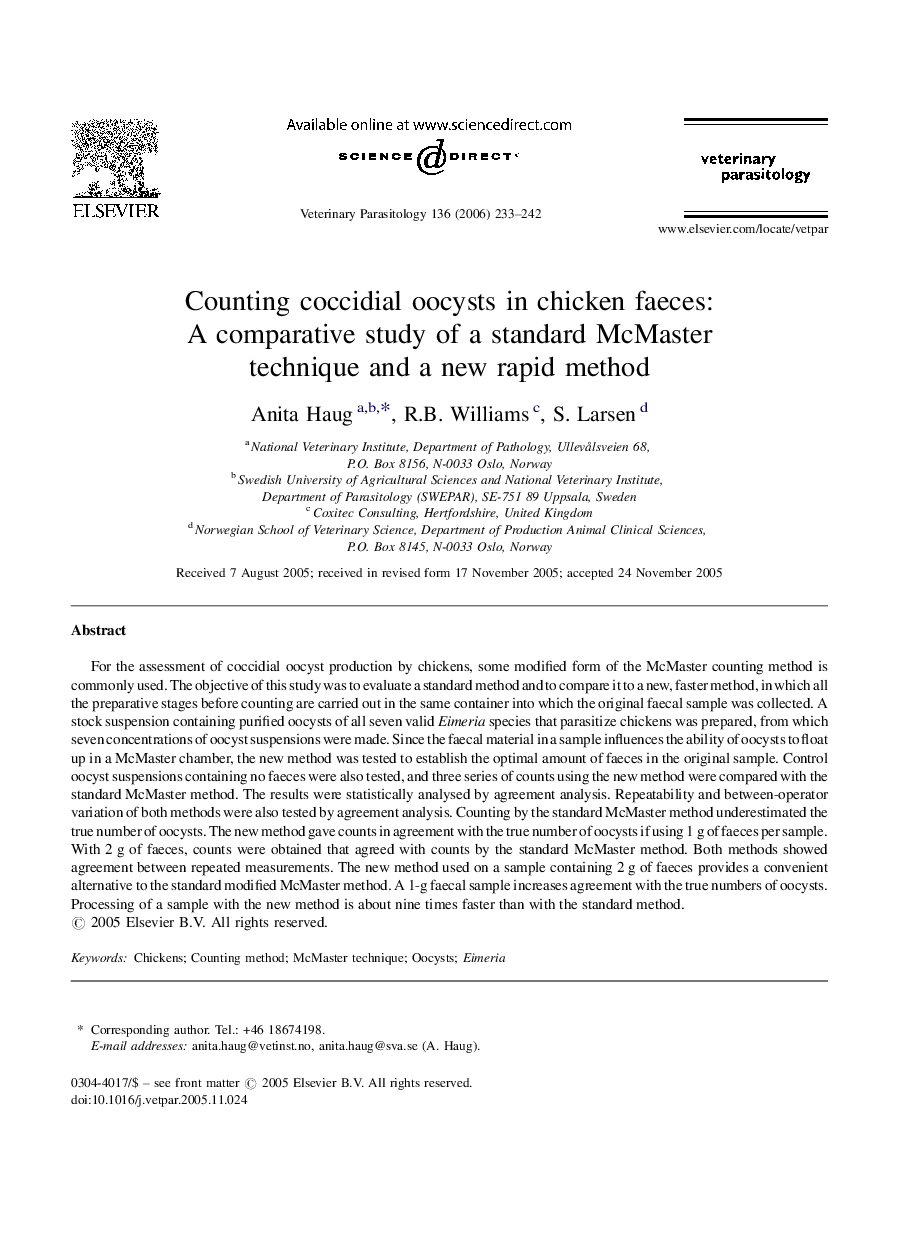| Article ID | Journal | Published Year | Pages | File Type |
|---|---|---|---|---|
| 2472559 | Veterinary Parasitology | 2006 | 10 Pages |
For the assessment of coccidial oocyst production by chickens, some modified form of the McMaster counting method is commonly used. The objective of this study was to evaluate a standard method and to compare it to a new, faster method, in which all the preparative stages before counting are carried out in the same container into which the original faecal sample was collected. A stock suspension containing purified oocysts of all seven valid Eimeria species that parasitize chickens was prepared, from which seven concentrations of oocyst suspensions were made. Since the faecal material in a sample influences the ability of oocysts to float up in a McMaster chamber, the new method was tested to establish the optimal amount of faeces in the original sample. Control oocyst suspensions containing no faeces were also tested, and three series of counts using the new method were compared with the standard McMaster method. The results were statistically analysed by agreement analysis. Repeatability and between-operator variation of both methods were also tested by agreement analysis. Counting by the standard McMaster method underestimated the true number of oocysts. The new method gave counts in agreement with the true number of oocysts if using 1 g of faeces per sample. With 2 g of faeces, counts were obtained that agreed with counts by the standard McMaster method. Both methods showed agreement between repeated measurements. The new method used on a sample containing 2 g of faeces provides a convenient alternative to the standard modified McMaster method. A 1-g faecal sample increases agreement with the true numbers of oocysts. Processing of a sample with the new method is about nine times faster than with the standard method.
